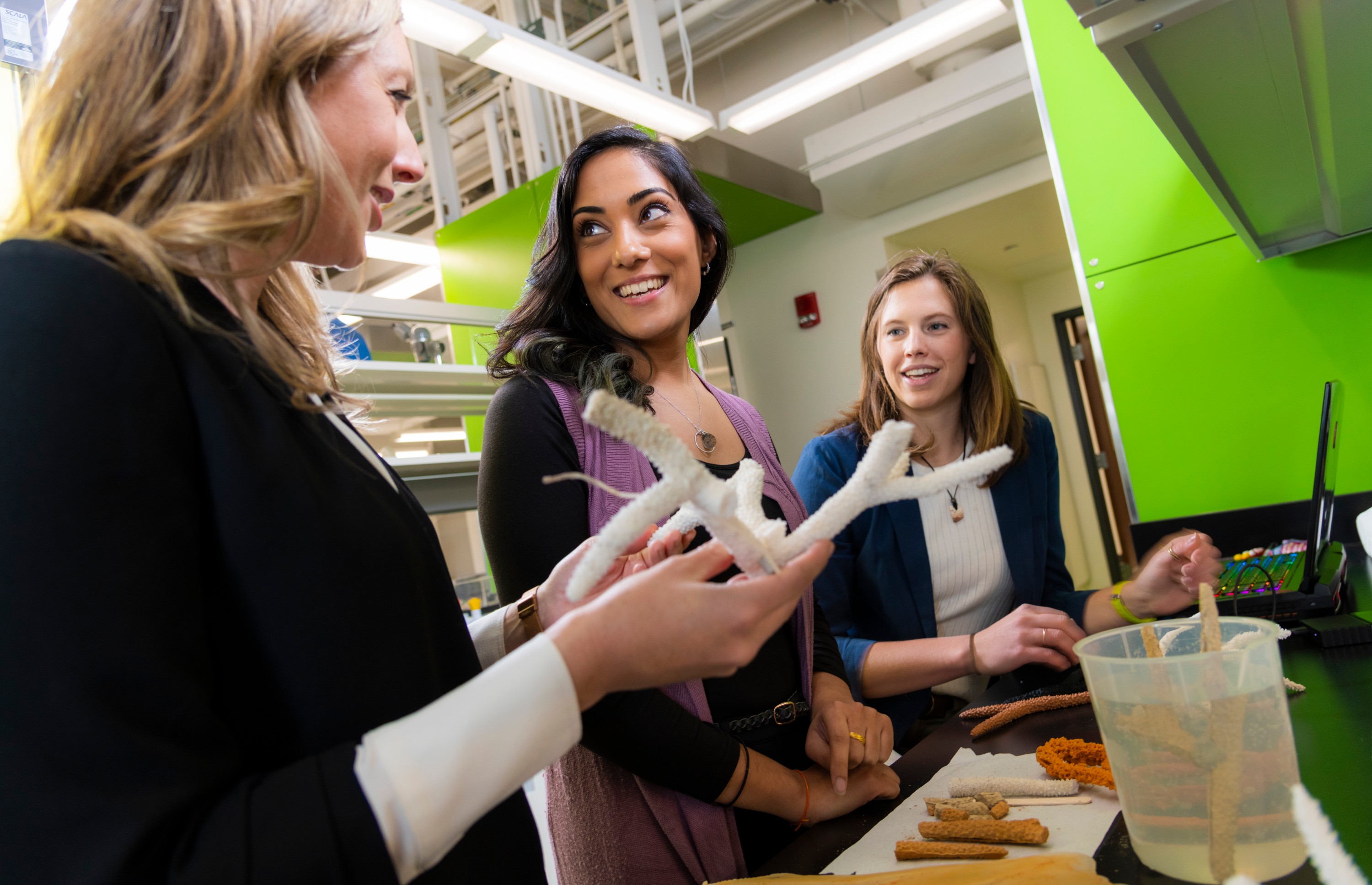Researchers have devised a new method of making lifelike aquatic artificial habitats that could help scientists better understand and restore real-world environments.
Aneri Garg, who completed the research as part of her master’s studies under the supervision of Stephanie Green, first developed the 3D scanning, printing, moulding and casting (3D-SPMC) method on a project involving coral reefs. As Garg explains, studying the features of living habitats that attract and retain different organisms is crucial in research on ecological habitat selection and, by extension, restoration planning.
“In particular for biogenic (live) habitats, they all have some kind of structural features or architectural complexity to them, but they’re also made of living tissue,” says Garg. “We’re trying to answer as many foundational questions as possible on these really important habitats.”
Green notes that coral reefs in the Caribbean, where Garg and Green work, have lost 80 per cent of their corals in recent decades. Lost or degraded habitats, including aquatic habitats such as coral reefs, have also been identified as the main threat to 85 per cent of the species on the International Union for Conservation of Nature’s “red list” of threatened species.
Garg and her team were able to create 3D artificial habitats that look lifelike and remain stable underwater, allowing for extended observation and providing an important tool for studying the behaviour of fish and other underwater organisms.
Garg notes that the 3D-SPMC method can be used for a wide range of purposes, including restoration planning for aquatic environments, and each stage in the process can be altered or adapted to suit specific needs.
An interdisciplinary method
To create the method, Garg first took stock of current practices for creating these types of artificial habitats, examining the materials and methods used and what some of the challenges and limitations have been. Then, she created an integrative method with three key metrics in mind — accessibility, scalability and ecological considerations.
She needed a cost-effective way to create about 400 artificial coral reef pieces for her research project and she wanted them to be as lifelike as possible to gather accurate data on how underwater organisms interacted with them. She also didn’t want to introduce additional plastic into the ocean or use any materials that had the potential to leach contaminants into the water.
“The method involved thinking about how we reduce the negative characteristics and integrate the positive characteristics of these different materials and methods,” says Garg.
The researchers predict the 3D-SPMC method performs on par with or better than other artificial habitat materials and designs typically used in habitat selection studies.
Garg stresses that creating the new method wasn’t a linear process. She shadowed people in disciplines from paleontology to engineering to arts, gleaning tips and insight along the way as she refined her approach.
She started by using a 3D scanner to capture the shape and minute features of coral skeletons, provided by biology department invertebrate collection curator, biologist Heather Proctor. Then she brought the scan to life with a 3D printer, tweaking the structure slightly to speed up the printing process and make it easier to mould the shape.
Garg then poured a type of silicone atop the 3D printed figures to create a set of moulds. “We essentially made an ice cube tray of sorts, sheets of moulds that we could quickly scale up making the artificial corals and that could be reused.” Finally, she used countertop concrete to fill the moulds and create the actual coral reef structures.
Aneri Garg assembles the artificial coral reef modules. (Video: Supplied)
Produced in the lab, planted in the ocean
To test the efficacy of the new method — and begin answering some other key research questions on aquatic organisms and how they interact with their habitats — Garg and her team had to bring the artificial coral pieces to the ocean.
“Coral restoration is almost analogous to tree planting. You grow a bunch of baby corals in the nursery, then take them to wherever you want to put them and outplant them there,” says Garg.
Taking a cue from the Coral Restoration Foundation’s best practices, Garg decided to use epoxy to affix the pieces to a designated study site in the Florida Keys National Marine Sanctuary. Over two days, a team of 30 worked to outplant the 800 pieces of coral (400 living and 400 artificial) into nearly 100 habitat patches, where Garg and her collaborators returned to monitor them.
Research assistant Taylor Restall affixes artificial corals to the Carysfort Reef study site, Florida, USA. (Video: Supplied)
In her future work, Garg plans to examine the impact of the different percentages of living and artificial coral in habitat patches, and whether the exact area they’re in makes a difference to the high biodiversity communities that live in and around coral reefs.
She says the ability to create these types of lifelike, adaptable artificial habitats allows researchers and partner organizations to move toward more effective conservation planning and begin finding answers to some pressing questions.
“It’s important to restore these habitats that are degrading due to human activities, but at the same time we also need to address the root causes.”
Since the process is almost endlessly customizable, next steps could involve everything from slightly tweaking the shape of the coral to looking at additions that may affect fish behaviour, such as creating a biofilm coating that would reduce the amount of algae settling over the reef pieces. Ultimately, Garg hopes other researchers can use this method as a tool to answer whatever research questions they have.
“It’s an opportunity to be creative. Who knows, someone may take the method and do something totally different, which would be great.”
